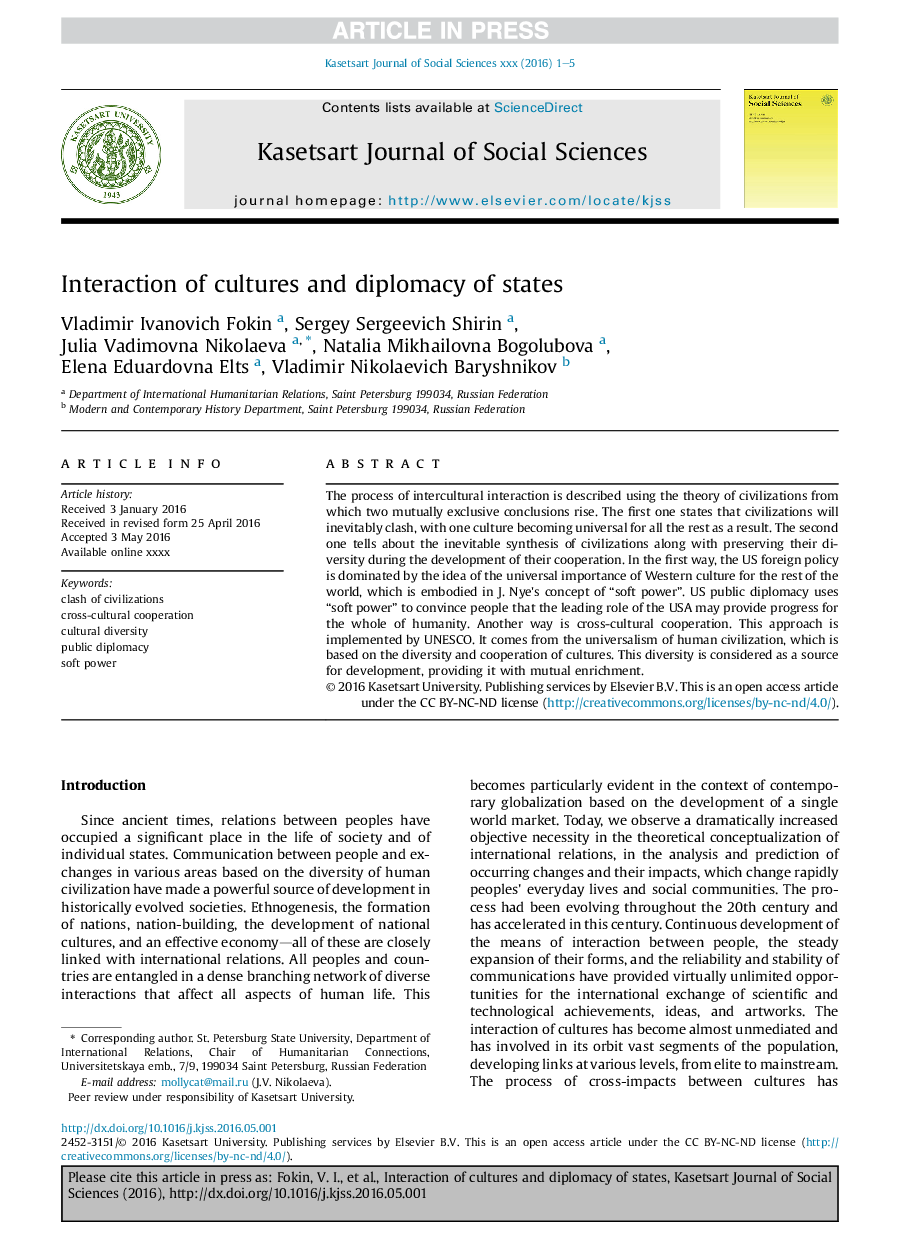| Article ID | Journal | Published Year | Pages | File Type |
|---|---|---|---|---|
| 6844092 | Kasetsart Journal of Social Sciences | 2017 | 5 Pages |
Abstract
The process of intercultural interaction is described using the theory of civilizations from which two mutually exclusive conclusions rise. The first one states that civilizations will inevitably clash, with one culture becoming universal for all the rest as a result. The second one tells about the inevitable synthesis of civilizations along with preserving their diversity during the development of their cooperation. In the first way, the US foreign policy is dominated by the idea of the universal importance of Western culture for the rest of the world, which is embodied in J. Nye's concept of “soft power”. US public diplomacy uses “soft power” to convince people that the leading role of the USA may provide progress for the whole of humanity. Another way is cross-cultural cooperation. This approach is implemented by UNESCO. It comes from the universalism of human civilization, which is based on the diversity and cooperation of cultures. This diversity is considered as a source for development, providing it with mutual enrichment.
Related Topics
Social Sciences and Humanities
Economics, Econometrics and Finance
Economics, Econometrics and Finance (General)
Authors
Vladimir Ivanovich Fokin, Sergey Sergeevich Shirin, Julia Vadimovna Nikolaeva, Natalia Mikhailovna Bogolubova, Elena Eduardovna Elts, Vladimir Nikolaevich Baryshnikov,
